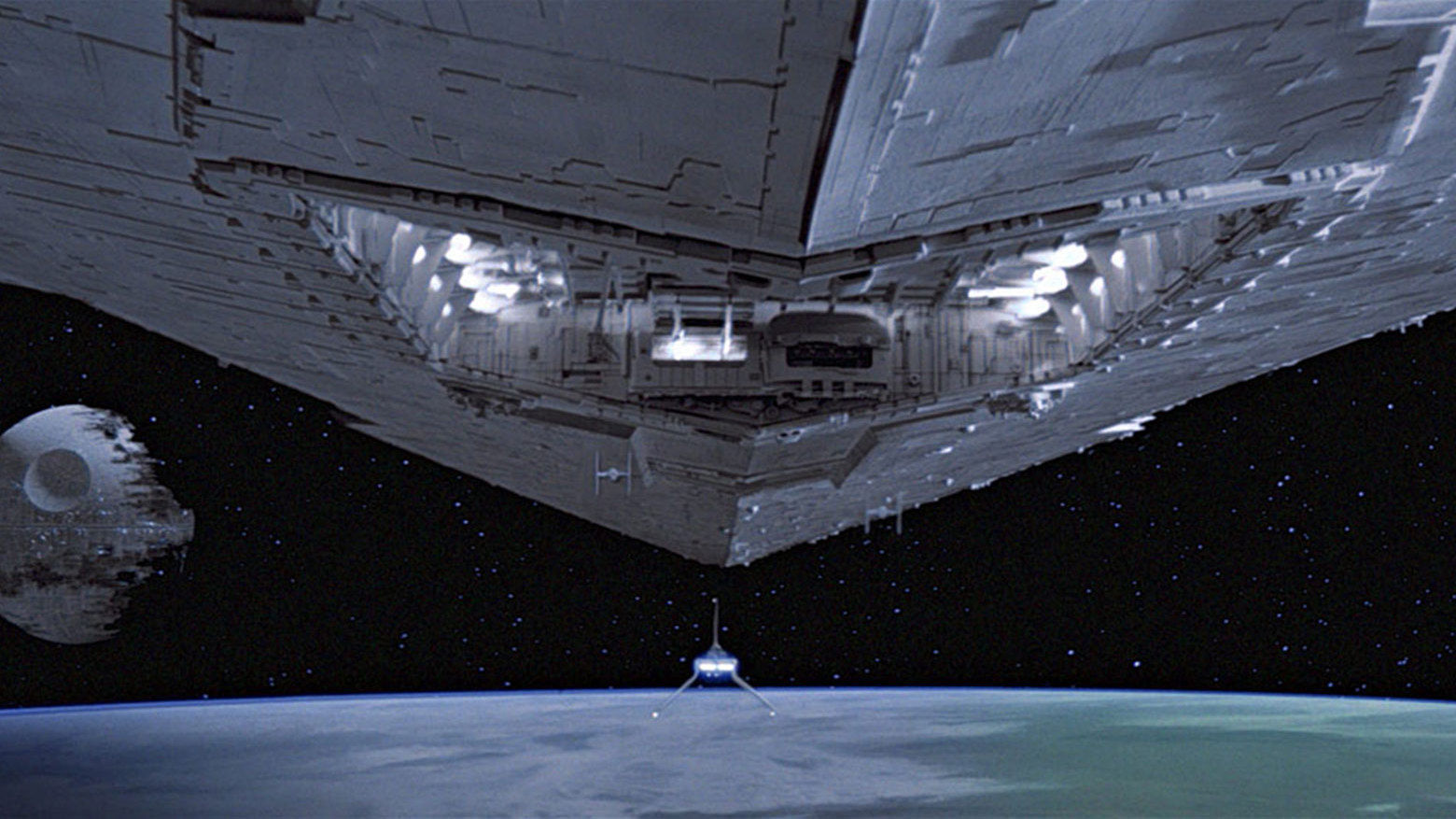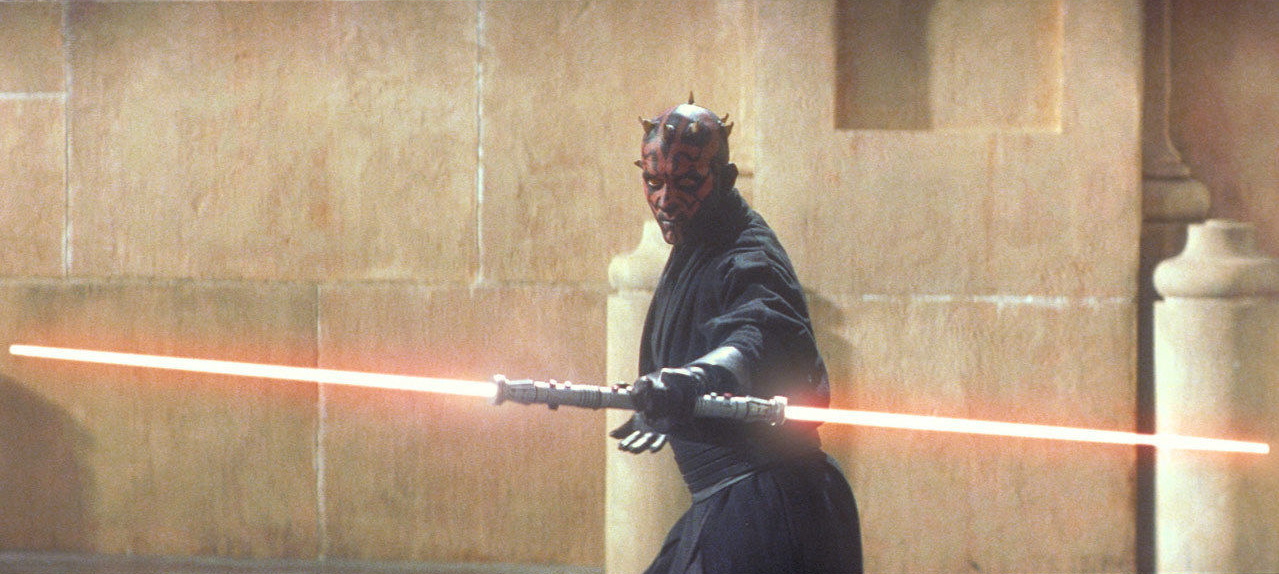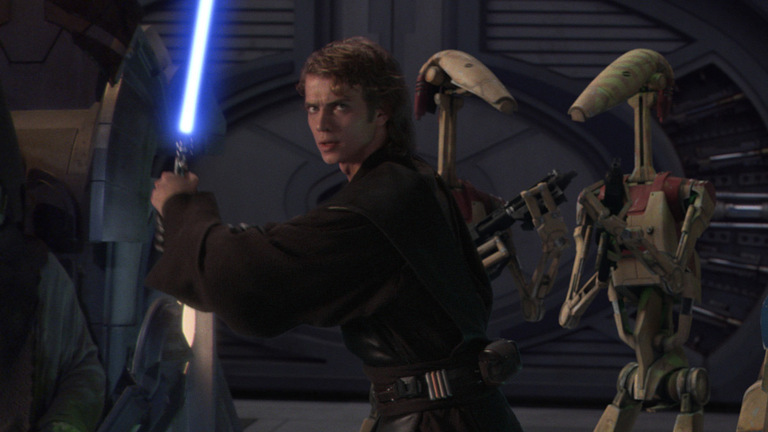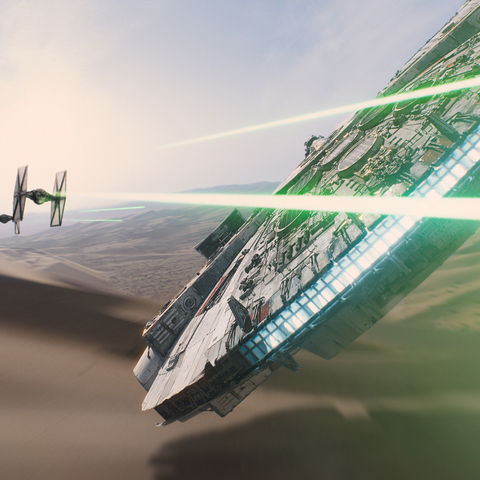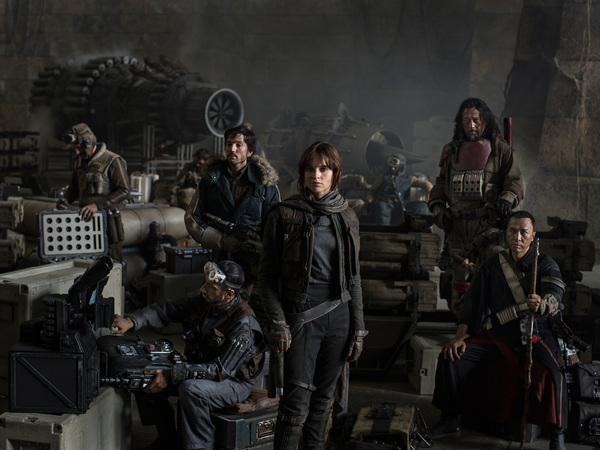In a Cinema Far, Far Away: Hollywood's 'Star Wars' Films
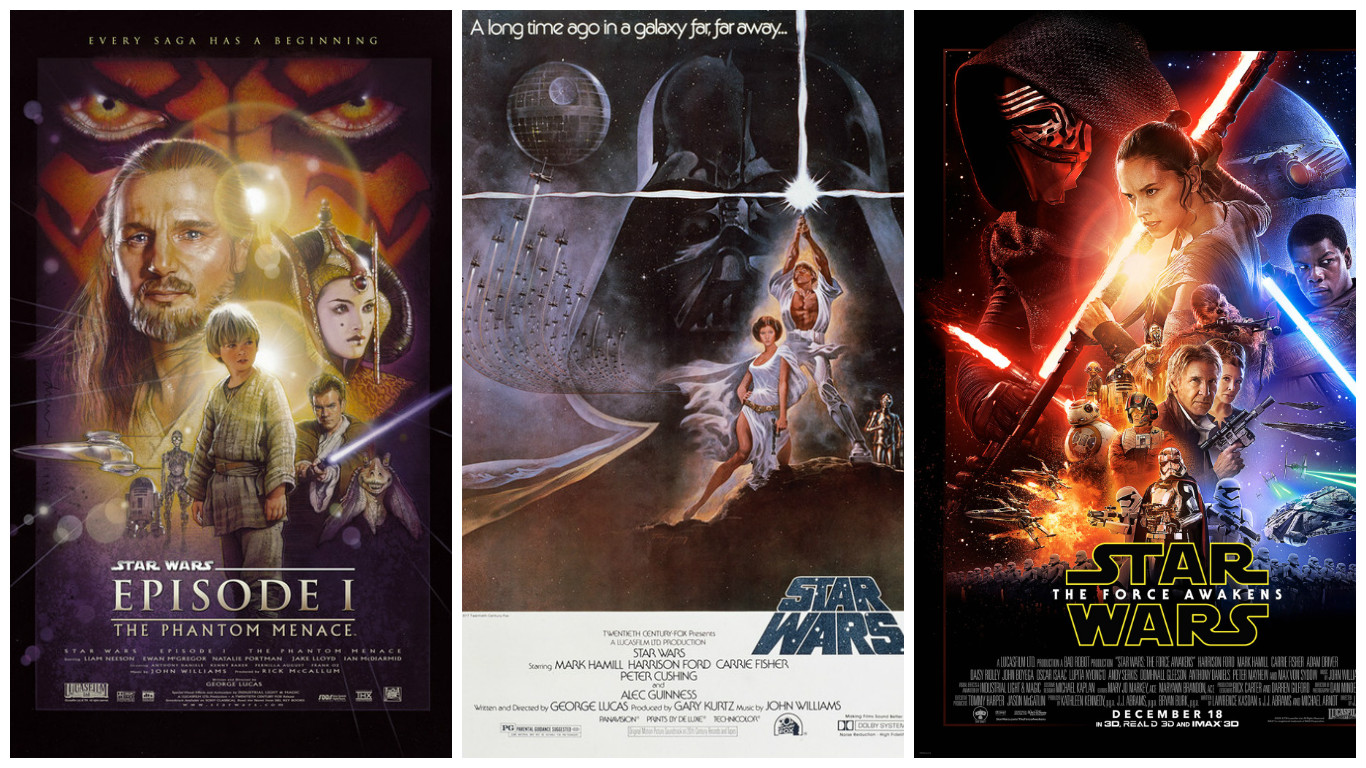
A long time ago, in a cinema not so far away, filmmaker George Lucas introduced the world to "Star Wars."
Today, fans new and old still enjoy visiting the space-based world that Lucas created. Here is a list of all the "Star Wars" films made by major Hollywood studios to date. Six "Star Wars" films have already been released, a new film is due out this December and at least one more is in the works.
In addition to this list, don't forget to check out our complete list of "Star Trek" movies, our "Best Space Movies" list, and our staff recommendations for best space movies.
We've divided this list into three groups.
First, there are the movies that started it all, known collectively as "the original trilogy." These three films were released between 1977 and 1983, and follow the adventures of Luke Skywalker, Han Solo and Princess Leia. In 1997, Lucas released "Special Edition" versions of the movies that contain additional visual elements and some other changes to the original films.
The second group consists of the "Star Wars" movies known as "the prequels." These movies were released between 1999 and 2005, and take place a few decades before the events in the original trilogy. The movies focus on Anakin Skywalker, Obi-Wan Kenobi, Emperor Palpatine and Queen Amidala. The original trilogy and all three prequels are available in one digital movie bundel on Amazon.com.
The third movie group consists of yet-to-be-released "Star Wars" movies, including "Star Wars: The Force Awakens," which opens in theaters Dec. 18 and takes place a few decades after the events of the original trilogy.
Breaking space news, the latest updates on rocket launches, skywatching events and more!
Which movie should you watch first?
There are different theories as to the order in which the "Star Wars" movies should be watched. Some people suggest watching the films in the order they were released, starting with the original trilogy, then moving on to the prequels and then following those up with any subsequent films.
But some fans suggest following the timeline within the "Star Wars" universe — that is, starting with the prequels and then watching the original trilogy.
Still others argue for a viewing order that makes the plotlines of the two trilogies mesh together: watch the first two movies from the original trilogy, followed by all three prequels and ending with the last movie in the original trilogy (and subsequent films after that).
The original trilogy
"Star Wars: Episode IV - A New Hope" (Originally titled "Star Wars") (1977)
A galactic war between the big, bad Galactic Empire and the small but determined Rebel Alliance is reaching a boiling point. Princess Leia (Carrie Fisher) sends a plea for help to her old friend Obi-Wan Kenobi, but the message is intercepted by young Luke Skywalker (Mark Hamill), who is anxious to get off his home planet of Tatooine and find adventure elsewhere in the galaxy. He soon gets his wish, and discovers he is capable of more than he ever expected. This film was a surprise sensation, full of great humor, awesome action sequences and special effects that are still breathtaking almost four decades later. "A New Hope" is available as a digital movie on Amazon.com.
"Star Wars: Episode V - The Empire Strikes Back" (1980)
Luke Skywalker is taking a break from his Rebel Alliance duties to train as a Jedi Knight with his pint-size instructor, Yoda (voiced by Frank Oz), who teaches him about The Force. But Luke's studies are interrupted when he learns his friends are in danger at the hands of the Empire's harshest enforcer, Darth Vader (played by David Prowse, and voiced by James Earl Jones). Luke must choose whether to complete his Jedi training, or delay it to save his friends and face his enemy before he is ready. Generally considered the strongest film of the original trilogy, this movie more fully develops the story's main characters, firmly establishes the line between good and evil, provides more insight into the nature of The Force and offers even more of those fantastic special effects. "The Empire Strikes Back" is available as a digital movie on Amazon.com.
"Star Wars: Episode VI - Return of the Jedi" (1983)
The final film in the original trilogy begins with Luke Skywalker and his crew undertaking a daring mission to save Han Solo (Harrison Ford) from the notorious Jabba the Hutt. The Galactic Empire stands in a fragile state, and rushes to construct a powerful machine capable of destroying entire planets. The Rebel Alliance sees this as an opportunity to bring an end to the war. Meanwhile, Luke focuses on a bigger goal: talking to Darth Vader, who Luke believes can be turned away from the "Dark Side" of the force, and become good again. "Return of the Jedi" is available as a digital movie on Amazon.com.
The prequels
"Star Wars: Episode I - The Phantom Menace" (1999)
The first story in the prequel trilogy follows a young Anakin Skywalker (Jake Lloyd) — who is destined for a dark fate — as he comes into the care of the Jedi apprentice Obi-Wan Kenobi (Ewan McGregor) and his master Qui-Gon Jinn (Liam Neeson). At the same time, a tense political situation begins to heat up around Queen Padmé Amidala (Natalie Portman) and the planet Naboo, and the Jedi council tries to sniff out a villain who lurks in the shadows. "The Phantom Menace" is available as a digital movie on Amazon.com.
"Star Wars: Episode II - Attack of the Clones" (2002)
In this film, which takes place roughly 10 years after the events of "The Phantom Menace," Anakin Skywalker (now played by Hayden Christensen) is assigned to protect Queen Amidala after an unknown villain attempts to assassinate her. Soon, romance begins to blossom between the reunited friends. At the same time, thousands of solar systems threaten to secede from the Galactic Senate, placing the galaxy on the brink of war, and Supreme Chancellor Palpatine continues to move his political pieces toward a malicious end. "Attack of the Clones" is available as a digital movie on Amazon.com.
"Star Wars: Episode III - Revenge of the Sith" (2005)
The Jedi Knights, along with their clone army, close in on the rival Separatists as well as one of their chief leaders, General Grievous. Meanwhile, Anakin fears for Padmé's life, and grows close to Supreme Chancellor Palpatine, who begins to nudge him toward the Dark Side. Anakin's choice will not only threaten his status as a Jedi Knight and his friendship with his mentor, Obi-Wan Kenobi, but also unleash a period of great darkness on the entire galaxy. This movie is considered the strongest of the three prequels by far, clearly showing Anakin's temptation and the consequences of his decision. "Revenge of the Sith" is available as a digital movie on Amazon.com.
New "Star Wars" films
"Star Wars: The Force Awakens" (2015)
"Star Wars" is coming back in a big way. Walt Disney Studios (which now owns Lucasfilm and the "Star Wars" franchise) has announced plans for several new "Star Wars" movies. This first installment is due out Dec. 18, 2015, and picks up 30 years after the events of "Return of the Jedi." The movie features appearances by many of the main characters from the original trilogy, and some new faces.
"Rogue One: A Star Wars Story" (2016)
"Rogue One" takes place before the events of "A New Hope," but does not follow the same storylines or characters of the original trilogy (although there will be some connection to the "central" "Star Wars" universe). The film centers on Jyn Erso, a young renegade whose father has been forced to design the Galactic Empire's world-destroying weapon, the Death Star. A message from Jyn's father send her and a group of resistance fighters on a journey to steal plans that could destroy the Death Star.
"Star Wars: The Last Jedi" (2017)
Due out in December 2017, "Star Wars: The Last Jedi" will pick up where "Star Wars: The Force Awakens" left off. The film will continue the storyline of some of the franchise's new characters including Rey, Finn and Kylo Ren, as well as characters from the original trilogy, Luke Skywalker and General Leia Organa.
[Editor's Note: The second image in this article is from "Return of the Jedi," not "A New Hope," as this article previously stated.]
Elizabeth Howell contributed to this article.
Follow Elizabeth Howell @howellspace. Follow Calla Cofield @callacofield. Follow Space.com @Spacedotcom. We're also on Facebook and Google+. Original article on Space.com.

Calla Cofield joined Space.com's crew in October 2014. She enjoys writing about black holes, exploding stars, ripples in space-time, science in comic books, and all the mysteries of the cosmos. Prior to joining Space.com Calla worked as a freelance writer, with her work appearing in APS News, Symmetry magazine, Scientific American, Nature News, Physics World, and others. From 2010 to 2014 she was a producer for The Physics Central Podcast. Previously, Calla worked at the American Museum of Natural History in New York City (hands down the best office building ever) and SLAC National Accelerator Laboratory in California. Calla studied physics at the University of Massachusetts, Amherst and is originally from Sandy, Utah. In 2018, Calla left Space.com to join NASA's Jet Propulsion Laboratory media team where she oversees astronomy, physics, exoplanets and the Cold Atom Lab mission. She has been underground at three of the largest particle accelerators in the world and would really like to know what the heck dark matter is. Contact Calla via: E-Mail – Twitter
